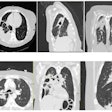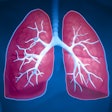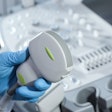In the fast-paced environment of dental offices, infection control protocols are essential to ensuring patient safety and maintaining a high standard of care. However, the mantra "If you don't write it down, it didn't happen" applies as much to patient care documentation as it does to infection control. Documentation plays a critical role in supporting compliance, protecting patients, and safeguarding the practice from potential litigation.
Team compliance
 Amanda Hill, RDH.
Amanda Hill, RDH.
Accurate documentation serves as a road map for the dental team, ensuring everyone is on the same page regarding infection control procedures. Detailed records of training sessions, sterilization cycles, and equipment maintenance create a culture of accountability.
When team members see what they are supposed to do, they are more likely to adhere to established protocols. These practices not only enhance compliance, but they also foster a sense of collective responsibility toward maintaining a safe and healthy environment.
Patient safety
Documentation is a key component in safeguarding patient health. By recording infection control processes, dental practices can ensure that each step is consistently followed. This reduces the risk of cross contamination and the spread of infections.
For instance, logging instrument sterilization cycles provides evidence that they have been properly sterilized before use. It can give early clues to equipment malfunction or team errors long before failed spore test results.
Protection from litigation
In the unfortunate event of a legal claim, thorough documentation can serve as a critical defense. Without written records, it becomes challenging to prove that proper infection control measures were followed.
Detailed logs of cleaning schedules, sterilization processes, and staff training sessions demonstrate a commitment to best practices and regulatory compliance. This documentation can be the difference between a successful defense and a costly legal settlement.
Let technology help you
While some of this documentation might seem like busy work, it's a step that can't be missed. Many manufacturers now offer online dashboards to track compliance and alert offices if a task is overdue. Some sterilization equipment even automates parts of the documentation process for you and stores it on the device. Similar to how a car alerts you when it's time for an oil change, these sterilizers notify you when maintenance is needed, helping to extend the life of equipment and decrease the chance of failure.
Thorough documentation of infection control protocols is not only a regulatory requirement but a vital practice that supports team compliance, ensures patient safety, and protects the dental office from potential legal challenges. Remember, if you don't write it down, it didn't happen. Prioritize documentation to uphold the integrity and success of your dental practice.
Amanda Hill, RDH, is a speaker, consultant, and award-winning author who brings over 25 years of clinical dental hygiene and education to dentistry. She is a recipient of the Association for Dental Safety's Emerging Infection Control Leader award. Hill (also known as the Waterline Warrior) can be reached at [email protected].
The comments and observations expressed herein do not necessarily reflect the opinions of DrBicuspid.com, nor should they be construed as an endorsement or admonishment of any particular idea, vendor, or organization



















